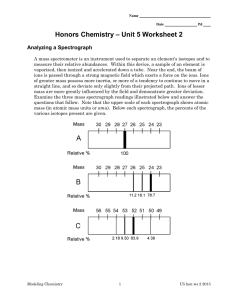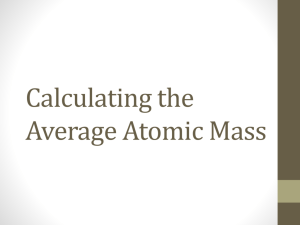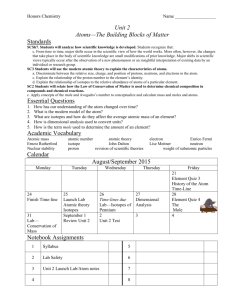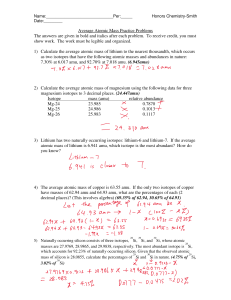How Atoms Differ
advertisement
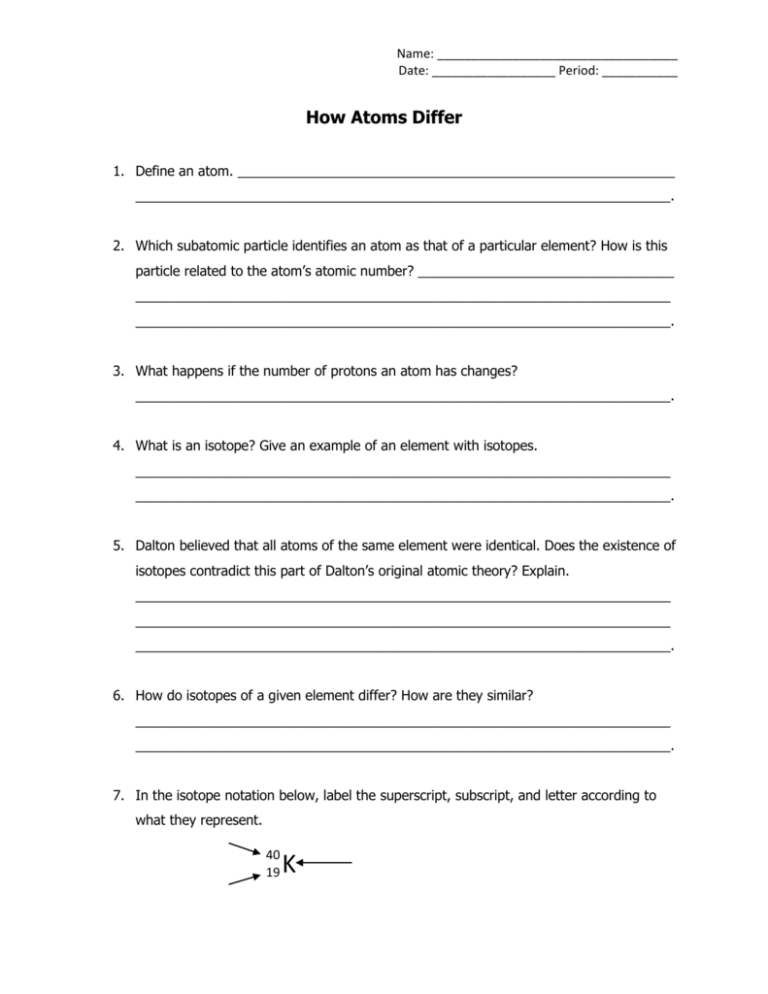
Name: ___________________________________ Date: __________________ Period: ___________ How Atoms Differ 1. Define an atom. __________________________________________________________ _______________________________________________________________________. 2. Which subatomic particle identifies an atom as that of a particular element? How is this particle related to the atom’s atomic number? __________________________________ _______________________________________________________________________ _______________________________________________________________________. 3. What happens if the number of protons an atom has changes? _______________________________________________________________________. 4. What is an isotope? Give an example of an element with isotopes. _______________________________________________________________________ _______________________________________________________________________. 5. Dalton believed that all atoms of the same element were identical. Does the existence of isotopes contradict this part of Dalton’s original atomic theory? Explain. _______________________________________________________________________ _______________________________________________________________________ _______________________________________________________________________. 6. How do isotopes of a given element differ? How are they similar? _______________________________________________________________________ _______________________________________________________________________. 7. In the isotope notation below, label the superscript, subscript, and letter according to what they represent. 40 19 K Name: ___________________________________ Date: __________________ Period: ___________ 8. Nitrogen has two naturally occurring isotopes, nitrogen-14 and nitrogen-15. The atomic mass of nitrogen is 14.007 amu. Which isotope is more abundant in nature? Explain. _______________________________________________________________________ _______________________________________________________________________ _______________________________________________________________________. 9. How many e-, p+, and n0 are contained in each of the following atoms? a. 132 b. 59 Cs ________ e- ________ p+ _________ n0 Co ________ e- ________ p+ _________ n0 55 27 10. How many e-, p+, and n0 are contained in each of the following atoms? a. gallium-64 ________ e- ________ p+ _________ n0 b. fluorine-23 ________ e- ________ p+ _________ n0 11. Silver has two isotopes. 107 47 Ag has a mass of 106.905 amu (52.00%) and 109 47 Ag has a mass of 108.905 amu (48.00%). What is the atomic mass of silver? Show all your work! 12. Data for chromium’s four naturally occurring isotopes is provided in the table below. Calculate chromium’s atomic mass. Show all your work! Chromium Isotope Data Isotope Percent Abundance Mass (amu) chromium-50 4.35% 49.946 chromium-52 83.79% 51.941 chromium-53 9.50% 52.941 chromium-54 2.36% 53.939




